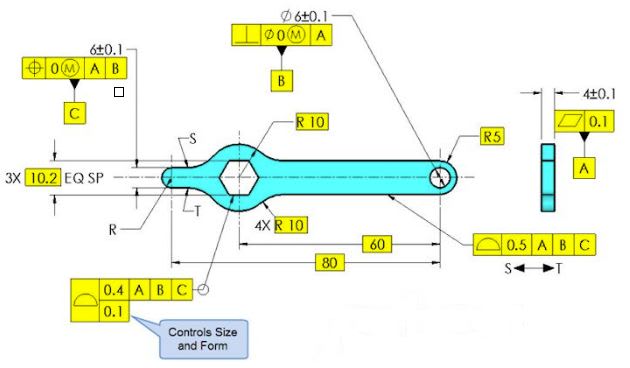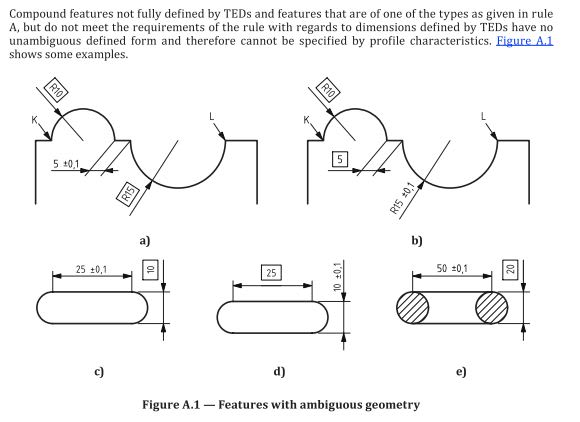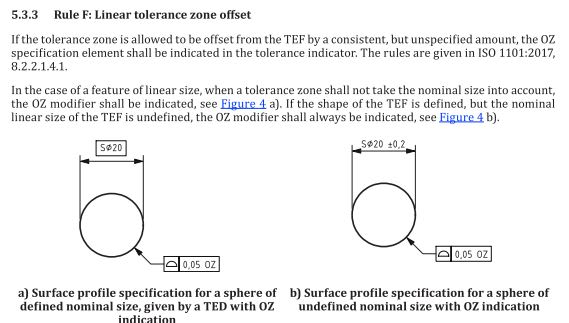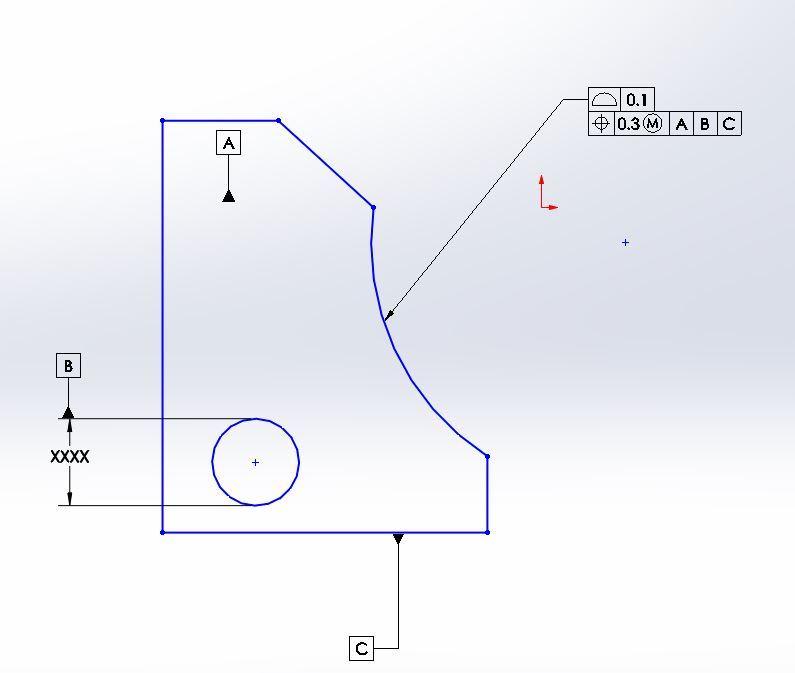Pmarc, Evan, 3DDave, greenimi and everbody
Speaking about extension of principles, committee, and the intent (legality) of the callouts within the standard
Could you please let me know what do you think about the following datum scheme:
Is, in your opinion, the intent of the standard to allow this?
Datum feature A: flat back surface, controlled with flatness
Datum feature B: hole, defined for size with ± and controlled with perpendicularity to A
Datum feature C: lower surface, defined with profile to A primary and B secondary.
Part defined with basic dimensions: basic distance from datum feature C to the hole in the center, basic radius for the feature controlled with profile and position combo, basic angles, basic length, basic width.
Question:
Is the feature shown with profile + position “combo” correctly defined per ASME Y14.5-2009?
Supplier QE states: “combo” depicted above is reserved for closed shapes as shown in Fig. 8-24.
Designer stands behind his GD&T callout: his stance is that nowhere on 8.8 (Combined Controls) is specified that the shape of a noncylindrical feature should be closed and surface interpretation prevails anyway. Advantage: using MMC on the profile.
Note: Part assembled with clearance between the questioned surface and its mating component. .
One of my coworkers posted the same question on different site, but he did not get any answers, so I said, let me try on eng-tips.
What do you think? Has this scheme envisioned by the standard?







